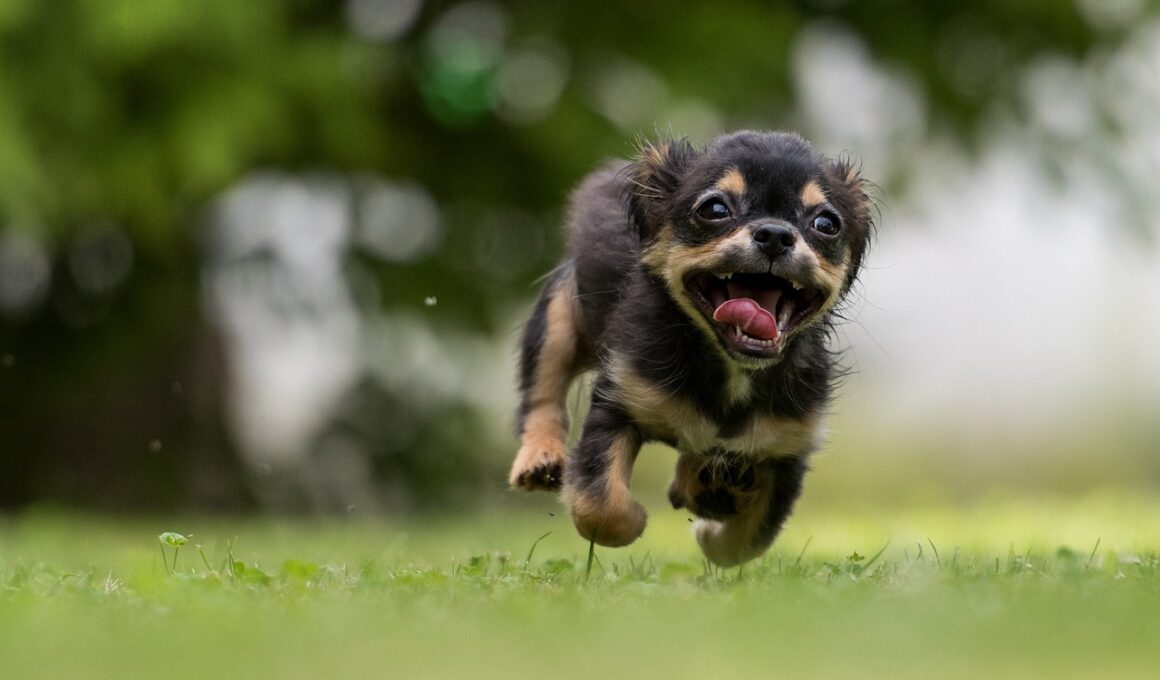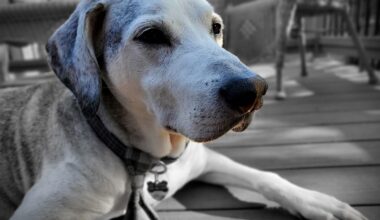Understanding Dog Temperaments
In dog photography, capturing dogs with difficult temperaments can be challenging yet rewarding. It’s crucial to first understand the different temperaments exhibited by dogs. For instance, some dogs may be timid, aggressive, or simply anxious. Recognizing these traits will help you tailor your approach during a shoot. Start by observing the dog’s body language; ears pinned back and a tucked tail often indicate fear or anxiety. Conversely, a dog that stands tall with raised hackles may be showing aggression or dominance. Identifying such characteristics is key to ensuring not only the safety of everyone involved but also to capturing authentic and dynamic photographs. Spend time getting to know the dog before taking pictures. This may include sitting on the floor to reduce the perceived size difference, establishing a bond through treats, or gently tossing toys. Understand the dog’s individual quirks; perhaps it performs better in familiar environments, or it relaxes more when surrounded by its favorite people. This knowledge will grant you greater control over how to engage and motivate the dog while photographing it, significantly improving the final results in your shots.
One effective method is to use positive reinforcement to encourage good behavior during shoots. By bringing along treats or favorite toys, you create a more relaxed atmosphere, allowing you to capture stunning images with a more natural look. Make use of your surroundings, too. If outdoors, let the dogs roam freely in a safe area; this will allow you to capture them during natural behaviors, which often results in compelling shots. Always be mindful to respect both the dog’s comfort and the environment; this maintains the subject’s calmness and encourages playfulness. Additionally, employing longer focal lengths can keep a respectful distance while getting crisp close-up shots of the dog’s face and expressions. Taking candid shots often leads to incredible moments worth preserving. Using these techniques ensures that you get high-quality images while also keeping the canine counterpart engaged and happy. Editing plays an important role, so don’t hesitate to enhance the images later if needed. Finally, patience also plays a vital role in shooting dogs with challenging temperaments, as the right shot may take time to appear.
Utilizing the Right Gear
Advanced dog photography techniques also involve using the right gear for effective results with tricky subjects. A quality camera lens is essential; consider investing in fast lenses with larger apertures that can capture clearer images in various lighting conditions. Lenses in the range of 50-200mm are suitable for portrait-style photographs, allowing you to isolate your subject while achieving beautiful bokeh effects. Stability is key; consider utilizing a tripod for group shoots or when taking photos in low light. You may want different camera settings, such as faster shutter speeds, to freeze action during playtime to prevent blurry images, particularly with highly active dogs. Shooting in bursts also increases your chances of capturing the ideal moment. Another useful accessory is a remote shutter release, preventing camera shake during longer exposures or group shots with human subjects interacting with the dogs. This technique optimizes your photography efficiently. Additionally, using reflectors in outdoor shoots can help manipulate natural light, ensuring that your images retain vivid colors. The end goal is to enhance the overall quality while demonstrating the unique qualities of each dog.
When working with dogs that have unpredictable behaviors, establishing trust is paramount. Begin each session calmly, allowing the dog to explore the area. As you build rapport, photograph them in relaxed poses, capturing significant moments as they unfold. To engage dogs, noise-making toys like squeakers or bells can garner their attention effectively. However, respect their boundaries; only use techniques they feel comfortable with, avoiding any form of intimidation or pressure. This ensures a positive experience, enriching the output of each photo shoot. Dogs that feel safe will often demonstrate their natural personality, leading to stunning images that show true character. Lighting conditions play a vital role as well. Using natural light enhances authenticity, while indoor sessions may require additional lighting tools. Soft, diffused light creates a flattering effect, especially on fur textures. Timing your shots for early morning or late afternoon can yield beautifully soft light, enhancing the image quality significantly. Ultimately, by prioritizing a positive experience between you and the dog, you will successfully document their unique temperament beautifully, leading to rewarding imagery captured artfully and respectfully.
Techniques for Challenging Environments
Shooting in challenging environments demands creativity and adaptability, especially with dogs that may not be accustomed to various locations. Outdoor settings provide excitement but can also be unpredictable. When photographing highly active or nervous dogs, ensure that the area is adequately controlled to minimize distractions. Setting up on a quiet, secure spot away from busy pathways can significantly improve focus and photography efforts. Familiarizing the dog beforehand with the surroundings can alleviate stress, promoting calming behavior during the shoot. Consider using natural obstacles like fences or shrubs to frame compositions nicely. This often creates a sense of place, while also directing attention towards the subject, enhancing depth in your shots. Using wide lenses allows for expansive backgrounds, capturing the essence of the environment in tandem with the dog’s character. Providing adequate breaks for both the dog and yourself is also important; this helps maintain energy levels and kept both relaxed throughout the session. Your awareness of external factors will ultimately reflect in your photography, ensuring successful outcomes even amidst the unpredictability of various shooting locations. Efficiently managing the environment optimizes your chances of capturing delightful images.
The power of persistence and patience should never be underestimated when photographing difficult dogs. Not every session will yield the perfect shot, so mental preparation is crucial for any photographer. Embrace the journey of capturing perfect images, as the process itself can often yield unexpected moments worth cherishing. Allow dogs to dictate the pace of the session, recognizing when they need a break or when they are eager to engage. Sometimes, setting a slower tempo can work wonders, facilitating genuine expressions. When both dog and photographer are relaxed, spontaneous moments arise naturally, often creating the most heartfelt memories. Over time, you’ll develop a keen eye for those fleeting moments that come together perfectly. Furthermore, establishing a routine can assist in acclimatizing both you and your canine model; consistency creates an atmosphere of assurance. Don’t shy away from experimenting with angles; below-the-eye shots or capturing dogs while they explore their environment from a dog’s perspective often tell great stories and highlight unique traits. Building an emotional connection throughout the process also eventually contributes to a successful photoshoot experience, leading to compelling outcomes reflecting the dog’s personality beautifully.
Edit with Care and Precision
The editing stage is where you can further enhance the beauty of your dog photographs. Selecting the right editing software can provide the necessary tools to brighten images, play with contrasts, and sharpen details, all of which contribute to the dog’s character shining through. Important elements to keep in mind while editing include balancing color saturation and ensuring consistency across the shots if shooting in a series. Too much saturation can distort the natural hues of the fur, leading to unrealistic portrayals; thus, striving for authenticity is best. Fine-tuning exposure levels is another key aspect; this helps highlight shadows or enhance details in the highlight sections without losing vital information. Cropping must be done carefully to maintain the subject’s proportions. Be mindful of the eyes; sharp, expressive eyes often make or break a photograph, so ensuring they remain the focal point during edits is crucial. Be willing to go back and revisit various edits to find the best output that showcases the dogs authentically. Eventually, a well-edited photograph tells a compelling story, elevating the initial capture into a memorable work of art showcasing the dog’s true personality.
In conclusion, mastering advanced dog photography techniques requires practice, patience, and a willingness to adapt. By understanding the temperament of each dog, employing effective strategies, utilizing the right gear, and perfecting your editing skills, you create opportunities for wondrous images. The unique characteristics of difficult dogs tell powerful stories that deserve to be captured authentically. Building a rapport with the dog leads to genuine interactions, ultimately producing remarkable photographs. The art of dog photography transcends mere images; it forms bonds and moments that resonate deeply with owners and viewers. Embracing the journey provides you the opportunity to learn from each encounter, improving your capabilities as a photographer. It’s a rewarding artistic expression often infused with love, trust, and joy, as dogs thrive in environments where they feel valued. Lastly, remember that each dog is an individual, and your portrayal should reflect that uniqueness. Respect, care, and compassion will foster an enjoyable experience for both you and the dog, reinforcing the relationship while capturing breathtaking images along the way. With every click, you’re not just a photographer; you’re a storyteller documenting moments that deserve recognition.


